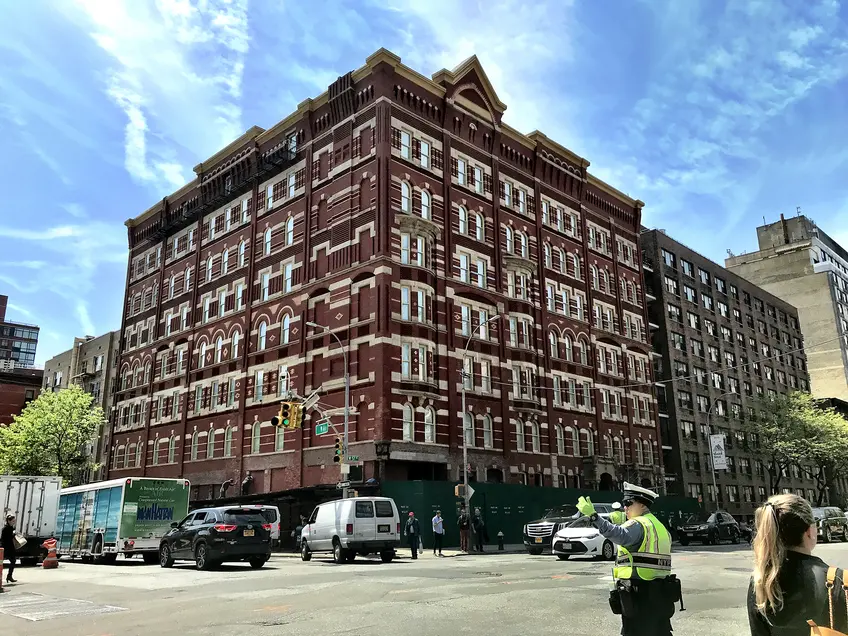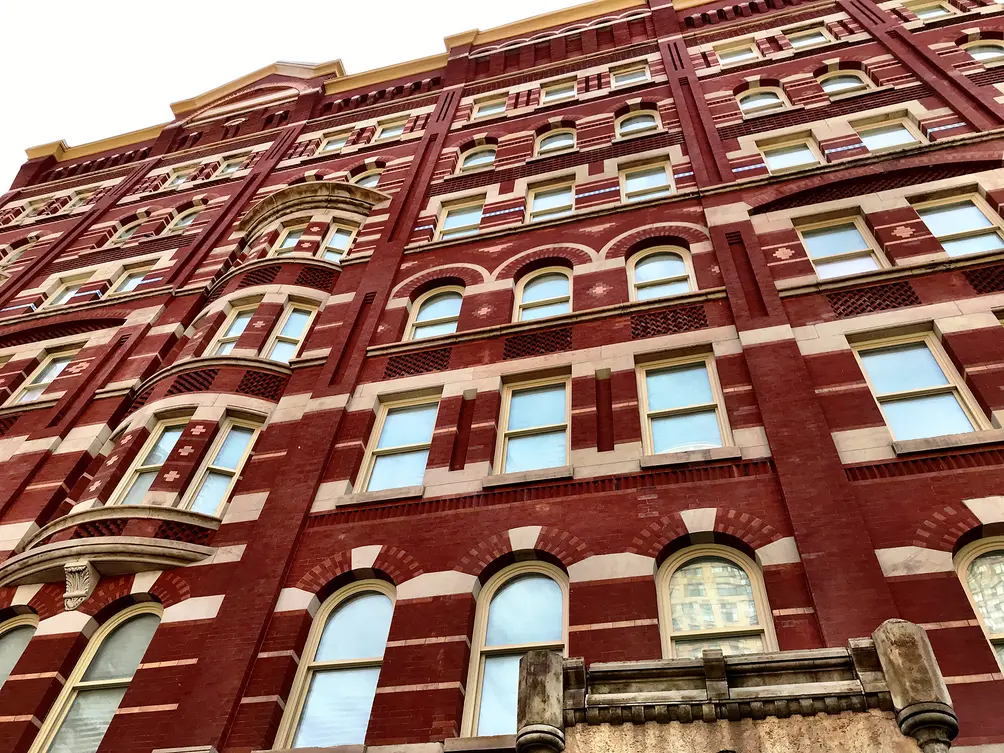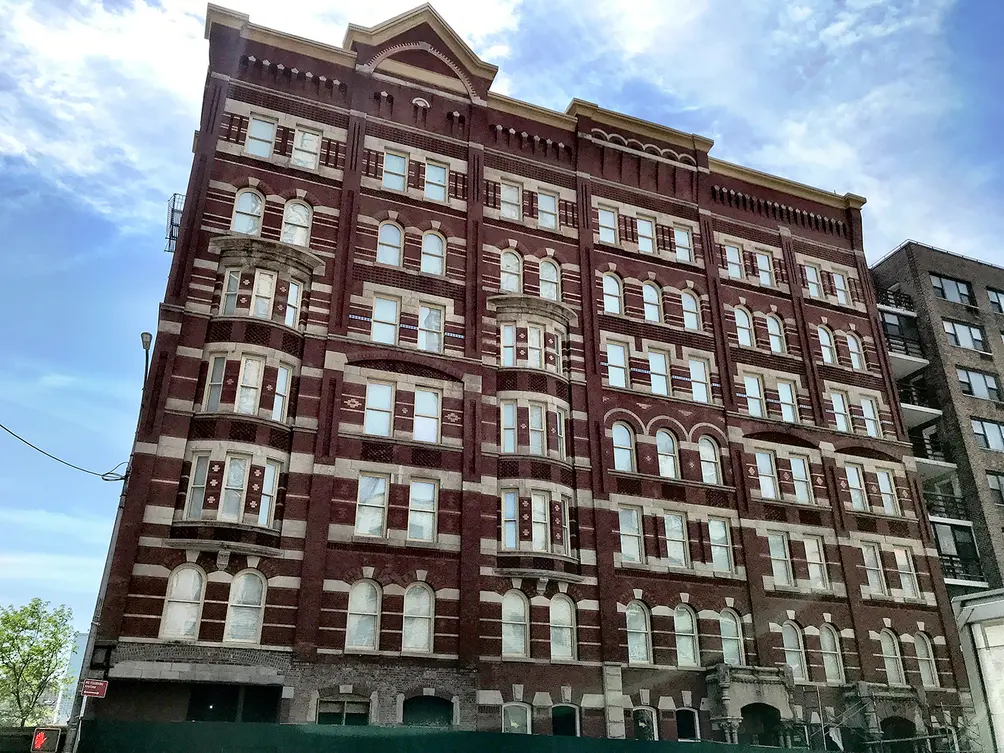 All photographs of The Windermere via Ondel Hylton
All photographs of The Windermere via Ondel Hylton
At a time when glassy new towers are becoming de rigueur all over the city, it is heartening to see a historic building restored to its former glory rather than razed to the ground and starting over. The Windermere, on the corner of 57th Street and Ninth Avenue, has spent years covered in netting and scaffolding. Both are coming down to reveal a rich red brick façade, restored architectural details, and new windows. The Wall Street Journal reports that the dilapidated apartments within are being converted to 175 hotel rooms.
In addition to revealing improvements, the scaffolding removal shows the latest chapter in The Windermere’s extensive history. When The Windermere went up around 1881, it was a complex of three seven-story red brick buildings with Queen Anne, High Victorian Gothic, and Romanesque elements that represented one of the earliest apartment buildings on the cusp of Midtown West and the Upper West Side.
With his own daughters in mind, superintendent Henry Sterling Goodale marketed the large apartments within as homes for “the New Woman,” a growing class of single, financially independent women (h/t West Side Rambler). The Windermere did not impose any of the lifestyle restrictions seen in boardinghouses of the day, and amenities like hydraulic elevators and telephones were further enticements.
With his own daughters in mind, superintendent Henry Sterling Goodale marketed the large apartments within as homes for “the New Woman,” a growing class of single, financially independent women (h/t West Side Rambler). The Windermere did not impose any of the lifestyle restrictions seen in boardinghouses of the day, and amenities like hydraulic elevators and telephones were further enticements.
 Architectural details
Architectural details
In the 1960’s, many of The Windermere’s apartments were converted to single-occupancy residences and marketed to New Yorkers who’d fallen on hard times, not to mention an emerging creative class that included actor Steve McQueen. The lure of flashy new apartments and the building’s increasing disrepair drove tenants away in the 1980's, and a well-documented harassment campaign didn't help matters. Despite being designated a New York City landmark in 2005, The Windermere’s decline continued into 2007, when the fire department deemed the building unsafe and the last handful of tenants was evacuated.
When The Windermere closed its doors, it did not go quietly. The Landmarks Preservation Commission sued for demolition by neglect, and the owner at the time paid $1.1 million in civil penalties. In 2009, developer Mark Tress acquired The Windermere for $13 million and quickly got to work on improvements. The hotel will have an interior courtyard, 1,500 square feet of grade-level retail, and a rooftop addition to allow for a restaurant. To compensate for past tenant harassment, 20 affordable apartments will also be provided. Landmarks wholeheartedly approved the plan and cheered the building's comeback.
When the hotel opens, it is likely that visitors will come for the location as much as for the history: At one time, The Windermere sat in the shadow of the elevated train tracks on Ninth Avenue. Today the building is only two blocks from the myriad subway lines stopping at Columbus Circle as well as its shopping and dining offerings. Central Park is not far off either, and Waterline Park’s Cipriani food hall and new park are taking shape a few blocks west.
 The Windermere
The Windermere

 6sqft delivers the latest on real estate, architecture, and design, straight from New York City.
6sqft delivers the latest on real estate, architecture, and design, straight from New York City.
